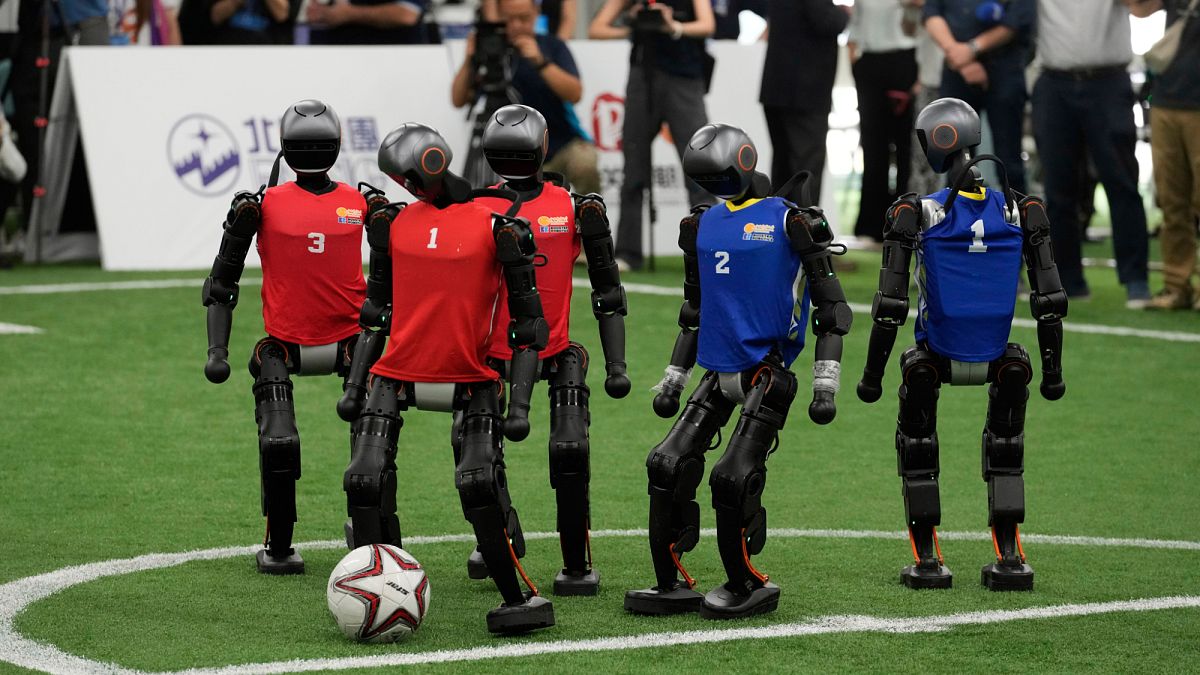

In a harmonious blend of technological advancement and environmental recovery, the world witnesses significant strides as robotic innovations and scientific discoveries push boundaries and foster hope. As we journey into these promising developments, the serene and positive progress reminds us of humanity’s potential to innovate for a sustainable future.
Beijing, celebrated for hosting the 2022 Winter Olympics, is now the training ground for a new kind of competition — the first World Humanoid Robot Games. From August 14th to 17th, robot teams from China and around the world will converge at the iconic speed skating venue. This event marks a pivotal moment in robotics, highlighting the potential for AI-powered robots to transcend traditional expectations and redefine their roles in modern society. By showcasing humanoid robots in competitive settings, organizers hope to ignite interest and inspire future innovations in robotics and artificial intelligence.
Simultaneously, a remarkable partnership is poised to transform urban landscapes across Europe. Rhode Island-based company Lyft has joined forces with Chinese technology giant Baidu to introduce robotaxis in select European markets. These autonomous vehicles, expected to feature on Lyft’s platform in Germany and the United Kingdom as early as 2026, signify a leap towards sustainable urban mobility solutions. By embracing cutting-edge AI and efficient transportation technologies, this collaboration promises to deliver cleaner, more accessible transport, reducing reliance on conventional vehicles and minimizing environmental impact.
Meanwhile, in a groundbreaking announcement, NASA is preparing to unveil plans to construct a nuclear reactor on the moon. This venture, a collaborative effort between the agency’s interim administrator and transportation leaders, heralds a new era of space exploration. The establishment of a sustainable power source on the lunar surface would support prolonged human presence and experimental endeavors. This mission aligns with broader moves toward harnessing nuclear and other clean energy sources beyond Earth, reflecting a commitment to innovation in space exploration as humanity reaches for the stars.
In environmental science, encouraging news emerges from the marine ecosystems along North America’s western coast. After a decade-long battle with the catastrophic sea star wasting disease (SSWD), researchers have uncovered the microorganism responsible for devastating sunflower sea star populations. The bacterium Vibrio pectenicida is now identified as the agent of destruction leading to a 90% decline in these vital creatures. The sunflower sea star’s critical role in marine biodiversity, coupled with its vulnerable status on the International Union for Conservation of Nature’s red list, underscores the importance of this discovery. Scientists hope this revelation paves the path for effective countermeasures, potentially revitalizing these ecosystems.
As technology advances and scientific discoveries unfold, the narrative of global progress is one of balance. From robotics to renewable energy, and the preservation of nature, the world stands at the cusp of transformative change. It is through mindful innovation and collaborative efforts that we can harmonize development with nature, forging a path toward a more sustainable and verdant future for all.
Source: {link}
